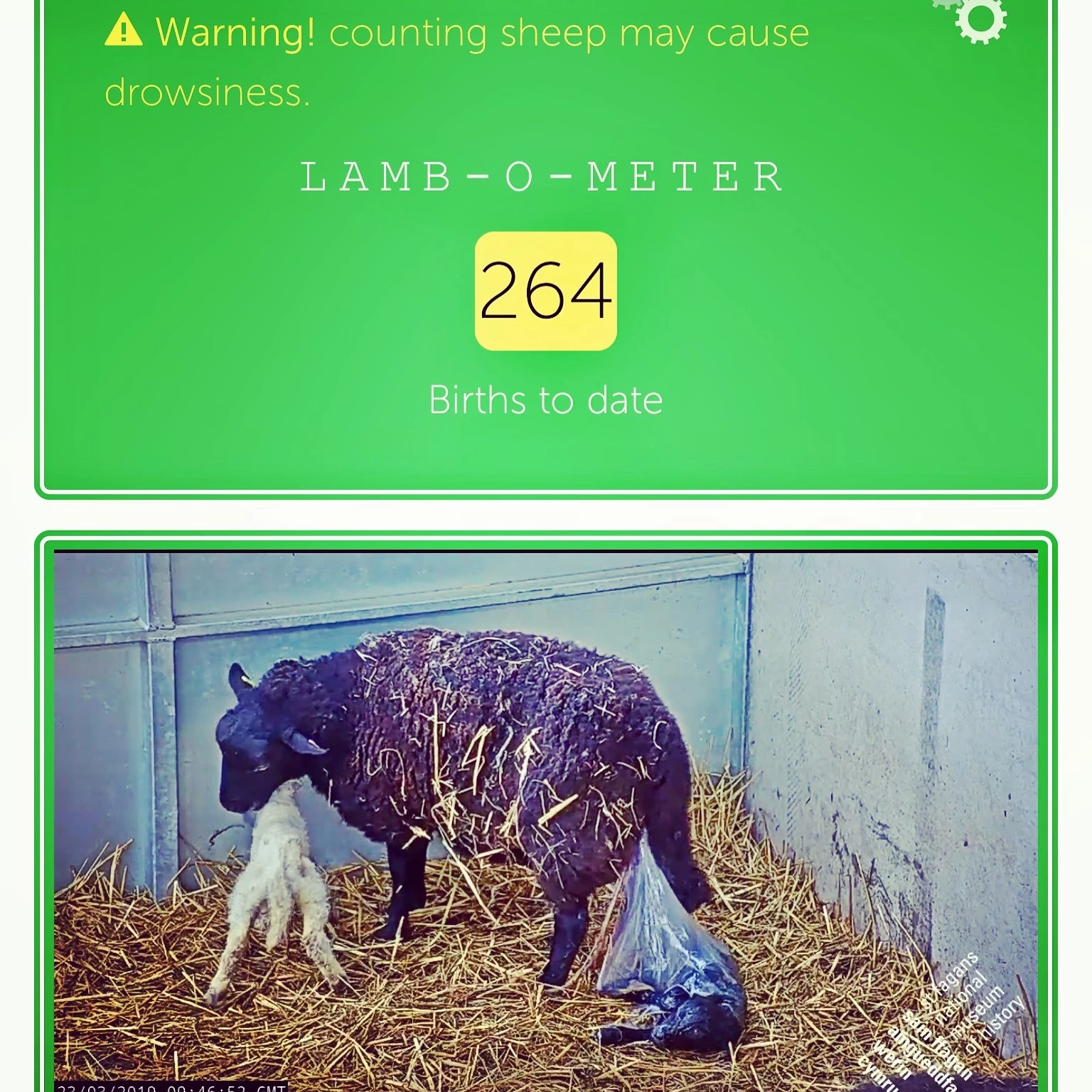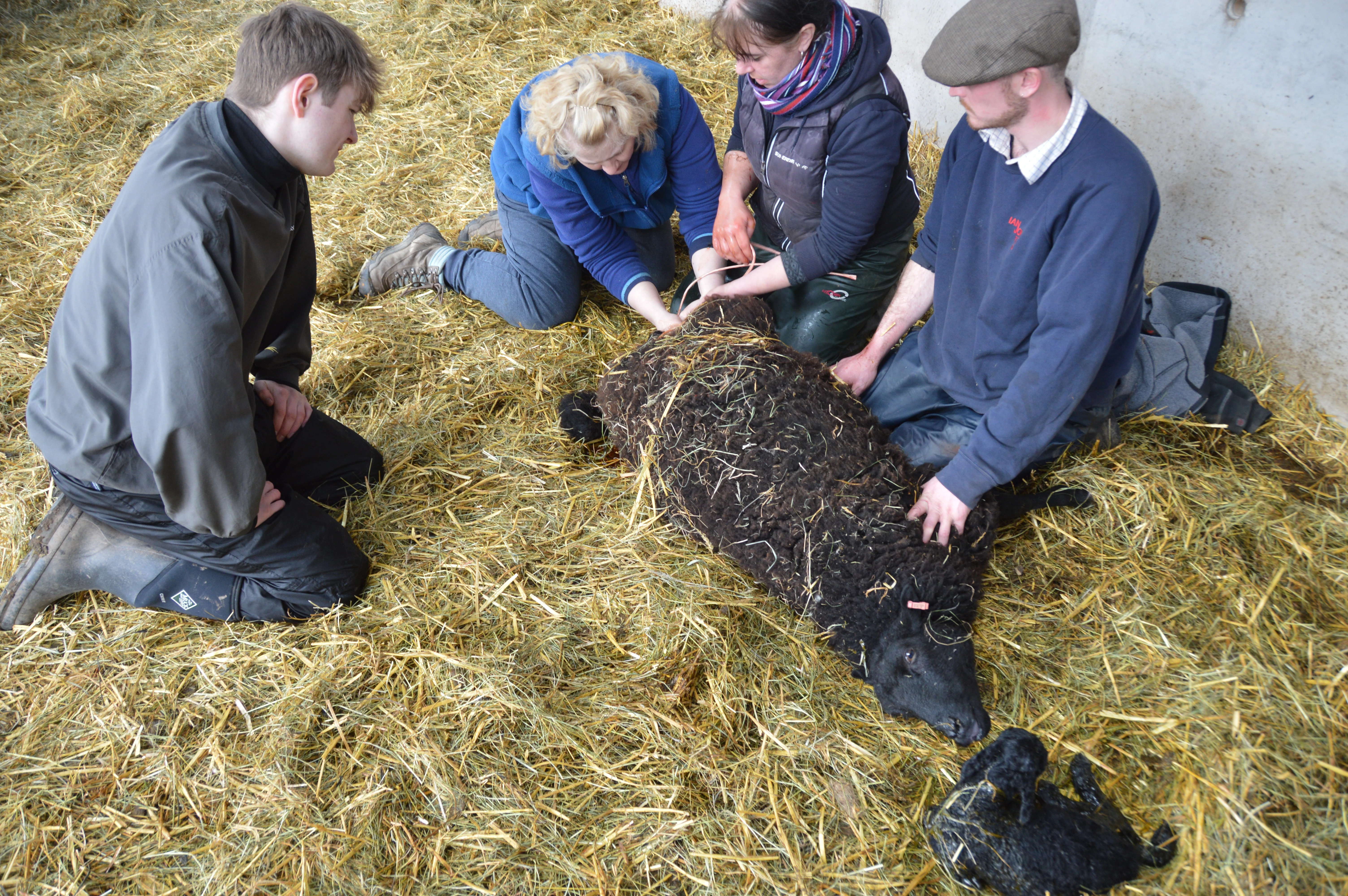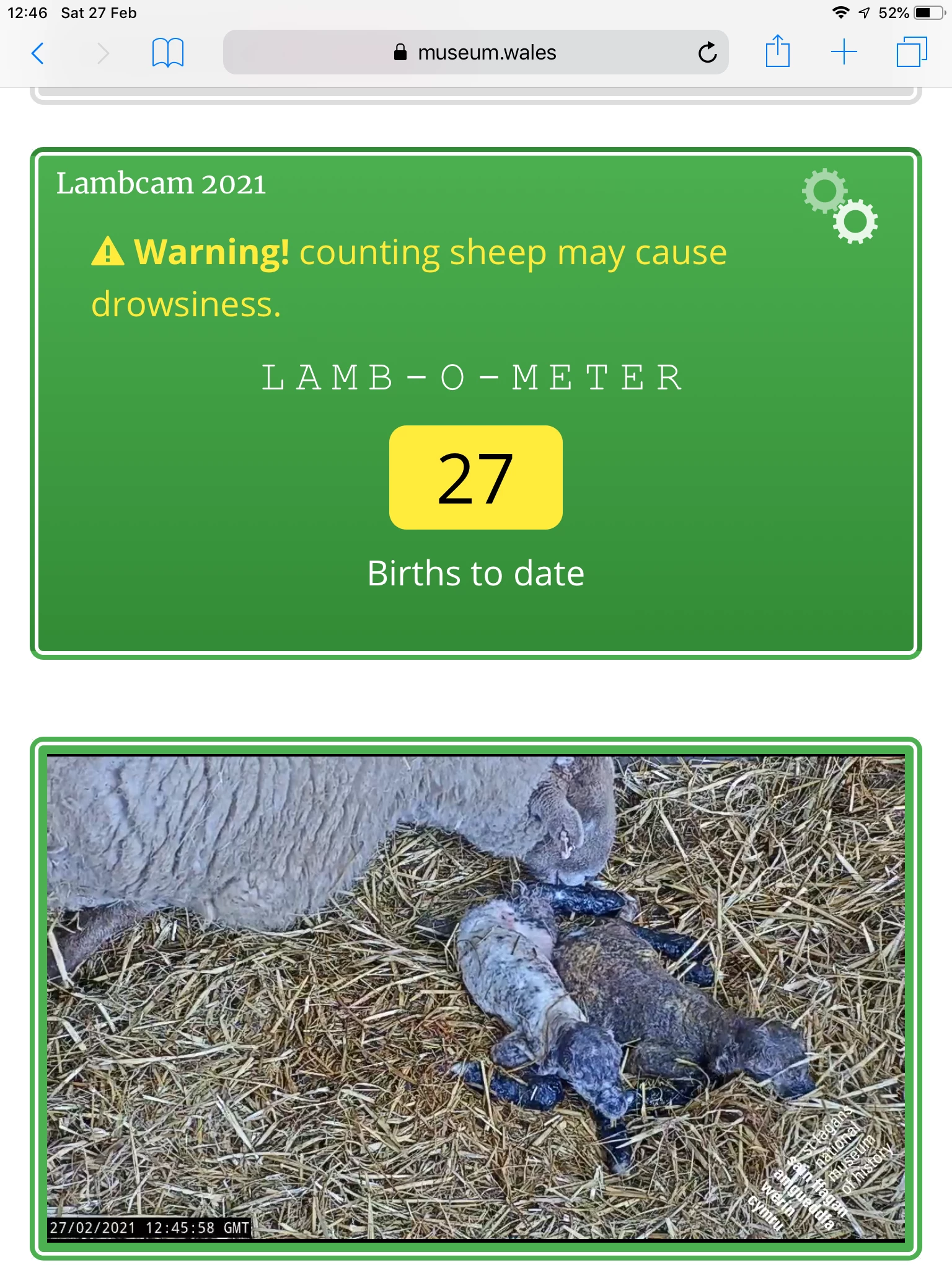Welcome to Lambcam 2022
, 11 March 2022
We have over 250 breeding ewes in the flock and we expect over 350 lambs – so this a very busy time of year for the team that care for our sheep. There are experienced staff on hand throughout the day and night once things get going in the lambing shed.
So, what does a normal birth look like? Lambing is an unpredictable business, so it can vary wildly – but here are some of the things you might see:
Labour:
- Water bag (intact or burst) and mucus hanging out of the back of the sheep before birth.
- Pair of feet protruding from the ewe’s back end.
- In early labour, the ewe will be restlessly getting up and down and pawing at the ground.
- As labour progresses, she will usually get down to push and stay down. Her contractions will get stronger with lots of physical effort visible.
- She may have her head thrown back, eyes wide and top lip curled back. This all normal and means that birth is hopefully imminent.
- Normal labour can take anything from 30 minutes to many hours. The farm team try to keep the shed quiet and calm and allow the sheep to lamb naturally where possible. They will only intervene to protect the welfare of the ewe and her lambs.
Birth:
- If the ewe has lambed naturally – both her and the lamb may lie still for a bit after the lamb is born. It’s been hard work for both of them, and all the lamb needs to be doing at this point is breathing. Ideally without the bag (amniotic sac) over its head.
- As part of the birth, the bag will normally break and be pulled back off the lamb’s nostrils. Sometimes the farmers may nip in to help this process.
- Lambs will be born covered in mucus, bits of the bag and sometimes smears of blood. This is all normal – the ewe will lick it clean, which will help stimulate the lamb to breathe and warm it up.
- Sometimes they come out with a yellow or greenish coating. This is called meconium (first poo) where the lamb has opened its bowels before/during birth.
Newborn lambs:
- Newborn lambs often twitch/shiver and thrash about. This is normal, and a good way to get the ewe’s attention. It’s also preparation for getting up and walking within minutes of being born. If you are a prey animal rather than a predator you need to be born ready to run (or hidden away in a den/nest).
- Lambs will also twitch/sneeze repeatedly as they clear the birth fluids from their noses and throats. Sometimes the farmers stick a bit of straw up the lamb’s nostrils to make it sneeze and help this process. They will also pat the lamb, or ‘cycle’ one of its front legs to stimulate the coughing/breathing reflex.
- If this doesn’t work - sometimes the farmers will swing a lamb by its back legs. This uses centrifugal force to help clear the lamb’s throat and get it to start breathing.
- Newborn lambs get a squirt of disinfectant spray on their navels. This helps to stop them getting infections from the shed floor through the newly severed umbilicus.
Moving from the lambing shed to the nursery area:
- After they have given birth, all ewes and their lambs will be moved out of the lambing shed.
- The farmers carry lambs by their legs:
- Because they have much stronger legs, and are much lighter than human babies.
- It avoids covering the lamb with human scent when they need to bond with their mothers.
- The kindest way to move a ewe that has just given birth is to get her to follow her lambs. Sheep’s instinct is to run away from humans – not follow them. But they will usually follow their new lambs when the farmers hold them like this.
- Each new family ges off to a bonding pen to get to know each other and be safe from the action in the lambing shed.
- Ewes that are less keen to follow their lambs (or ones that just run off after giving birth) are usually yearlings lambing for the first time.
- The yearlings are also much wilder, as they are less used to being handled with the flock. You might see the farmers use a different technique to move these sheep and their lambs:
- They will remove the lambs first, so they don’t get trampled.
- Then catch the ewe – which can still run fast even thugh she has just given birth!
- They will walk these sheep out with their legs astride the ewe’s shoulders. This the best way to control the sheep and stop it doing a complete runner. (They are NOT sitting on them).
- The whole family will be reunited in a bonding pen – where everything usually settles down quite quickly as the ewes come around to the idea of motherhood.
You can find out lots more about our sheep at lambing time in these blogs from previous years:
Lambcam 2021 - FAQs: | National Museum Wales
A guide to lamb presentation - aka ‘what’s going on in there?’ | National Museum Wales




